The Monstera Obliqua Peru is a rare and fascinating plant that has captured the attention of plant enthusiasts worldwide. Known for its unique, highly fenestrated leaves, this plant is both a challenge and a delight to grow. In this guide, we’ll share expert tips on how to care for and cultivate the Monstera Obliqua Peru.
Introduction
The Monstera Obliqua Peru is a member of the aroid plant family, which includes popular varieties like Philodendron, Anthurium, and Aglaonema. Native to the tropical regions of Central and South America, this plant is prized for its paper-thin leaves that feature dramatic holes and perforations. Similar to Syngonium and Epipremnum, the Monstera Obliqua Peru is not only beautiful but also requires specific care to thrive.
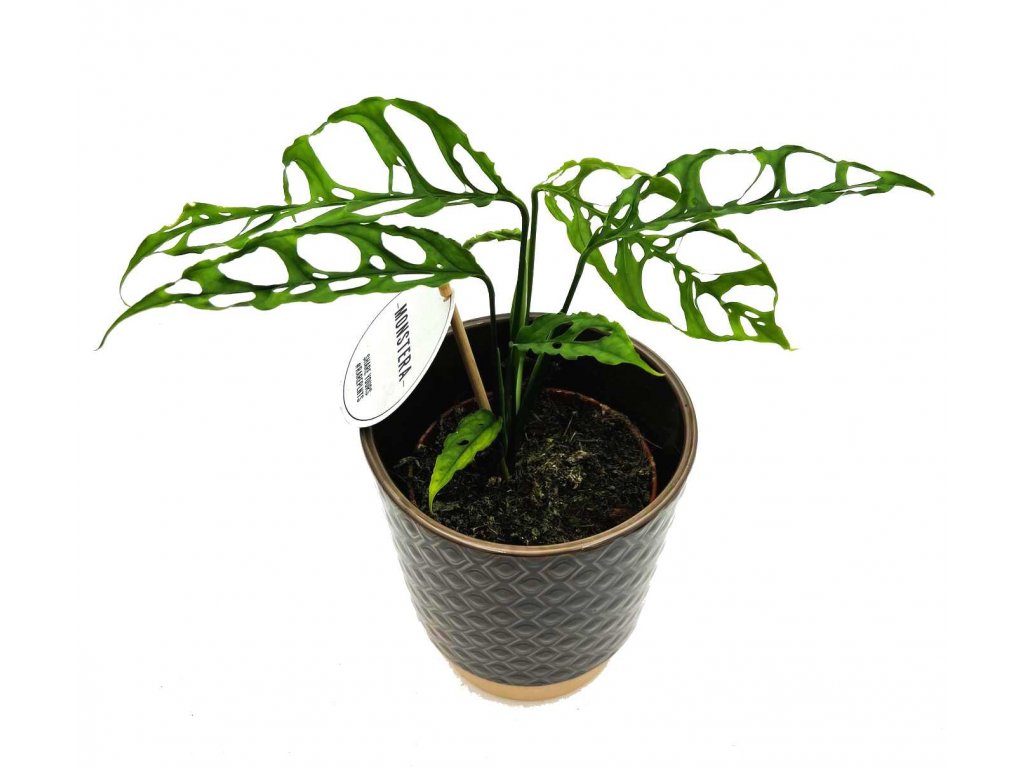
A Rare Beauty
With its iconic split leaves, intricate perforations, and variegated foliage, monstera obliqua peru is considered by many as one of the most beautiful houseplants in existence. Its rarity and striking appearance make it highly coveted among collectors.
Slow Growing
Monstera obliqua peru grows at an exceptionally slow pace, even compared to other monstera species. It can take years for an immature plant to reach maturity and develop its iconic leaves. This slow growth rate contributes to its status as an incredibly rare specimen.
Characteristics
The monstera obliqua peru displays several distinctive characteristics that set it apart from other monsteras.
Foliage
The foliage is the most striking feature of monstera obliqua peru. The leaves have a variegated pattern of yellow and white markings scattered across a deep green base. Mature leaves develop intricate perforations and slits as they grow.
Perforations
The perforations start out as small holes concentrated around the central vein of each leaf. As the leaves mature, these perforations grow in number and size, transforming each leaf into a delicate, lace-like pattern.
Shape
Mature leaves can grow up to 30 inches long. They have an oblong, asymmetrical shape with one side significantly longer than the other
Growth Pattern
Monstera obliqua peru is a climbing, epiphytic plant in its natural habitat. As houseplants, they exhibit trailing growth dependent on structural support from stakes or moss poles. The trailing stems can reach lengths of five feet or more when properly supported.
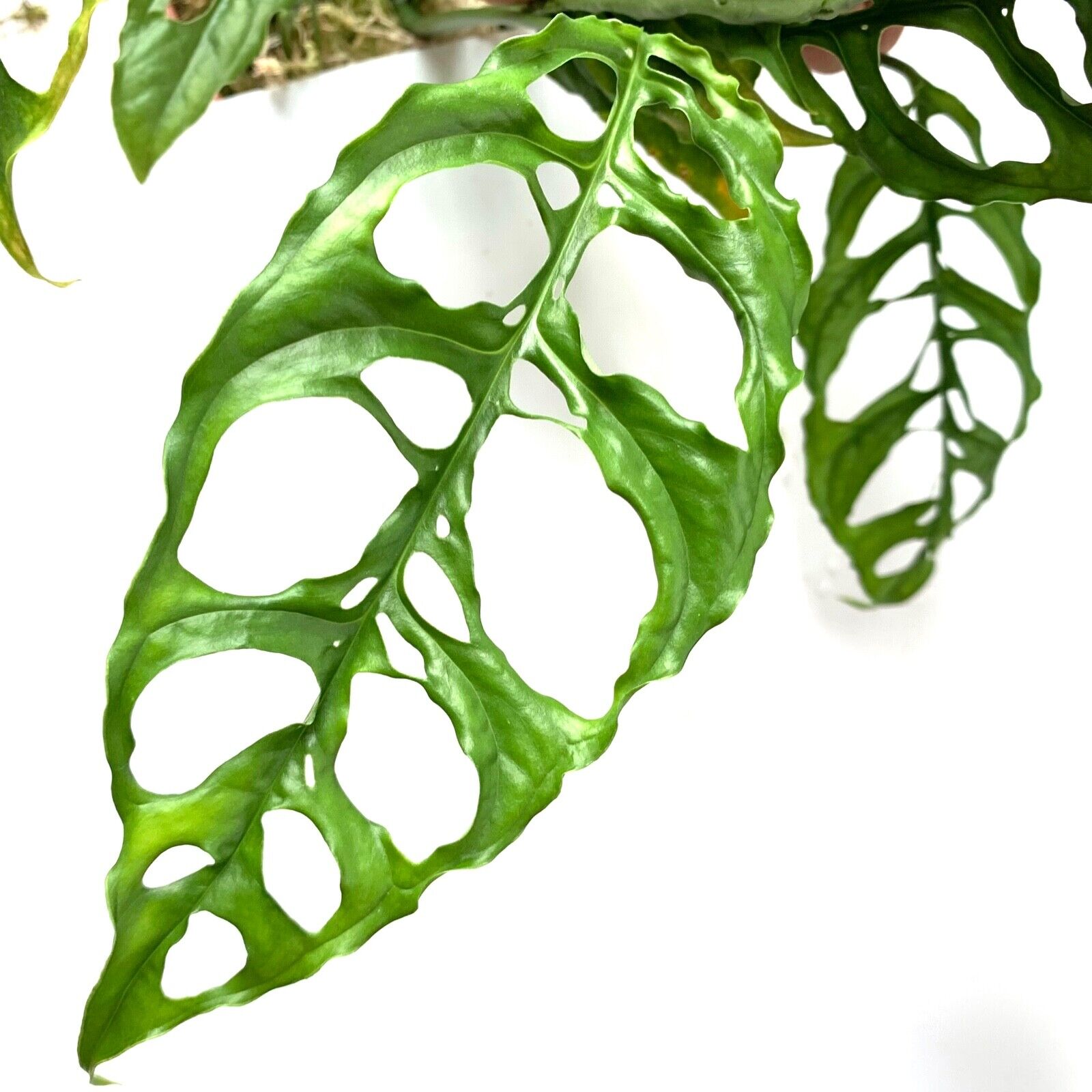
Why Choose Monstera Obliqua Peru
Adding a monstera obliqua peru to your plant collection is a major investment. But for serious plant lovers up for the challenge, the rewards outweigh the effort.
Distinctive Beauty
With its show-stopping perforated leaves and variegated foliage, monstera obliqua peru possesses an extraordinary beauty not found in more common houseplants. When properly cared for, it will lend any space a dramatically exotic feel.
Conversation Starter
As an incredibly rare specimen, monstera obliqua peru never fails to elicit awe and curiosity when guests spot it in your home. It serves as a true testament to your dedication as a plant parent.
Rewarding Challenge
Successfully raising a healthy monstera obliqua peru requires patience, attentiveness, and care. But the joy and satisfaction you’ll feel watching your plant slowly unfurl new leaves is second to none for a devoted plant collector.
Caring for Monstera Obliqua Peru
While caring for Monstera Obliqua Peru presents unique challenges, our comprehensive guide on Monstera care can provide valuable insights to help your rare plant thrive.
Light
Monstera obliqua peru thrives best in bright, indirect light. Some early morning or late afternoon direct sun is beneficial but should be limited to avoid scorching the fragile leaves. Insufficient light will inhibit the plant’s growth.
Finding the Light Sweet Spot
Place your monstera near a south or west facing window where it can soak up plenty bright, indirect light. Adjust its exact positioning based on the strength of direct light exposure to find the optimum balance. Use sheer curtains to help diffuse harsh afternoon sun beams.
Watering
Establish a consistent watering routine to keep your monstera obliqua peru hydrated but never waterlogged. The soil mix and pot size also impact your particular plant’s watering needs.
Water Requirements
Monstera obliqua peru prefers slightly moist but well-draining soil. Allow the top inch or two of soil to dry out in between thorough waterings. The soil should never be soggy or stay saturated for long periods. Proper drainage is key to prevent rot and other moisture-related diseases.
Adjusting Your Routine
Your monstera’s water needs may fluctuate depending on environmental factors like season, temperature, and humidity levels. Pay close attention to subtle changes in your plant’s appearance and growth pattern to assess when to adjust your watering routine accordingly.
Humidity
Replicating the steamy tropical environs this plant naturally grows accustomed to calls for higher and consistent humidity levels. Supplemental humidification helps monstera obliqua peru thrive.
Using a Humidifier
Run a humidifier nearby your monstera for several hours each day, aiming to keep the ambient humidity around 60%. Ensure the humidifier produces a fine mist to discourage fungal diseases.
Pebble Trays
Place small pebbles in a tray filled with water, allowing the water to weakly evaporate. Position the pot above the water tray to increase humidity right around your plant through this passive evaporation.
Air Circulation
While appreciating concentrated humidity, monstera obliqua peru also requires ample air circulation. Stagnant conditions can lead to increased risk of diseases.
Use overhead circulation fans or oscillating table fans to prevent moisture and heat build up within your monstera’s microclimate. Position the fans to gently blow air around your plant without directly blasting its foliage which can cause drying or breakage.
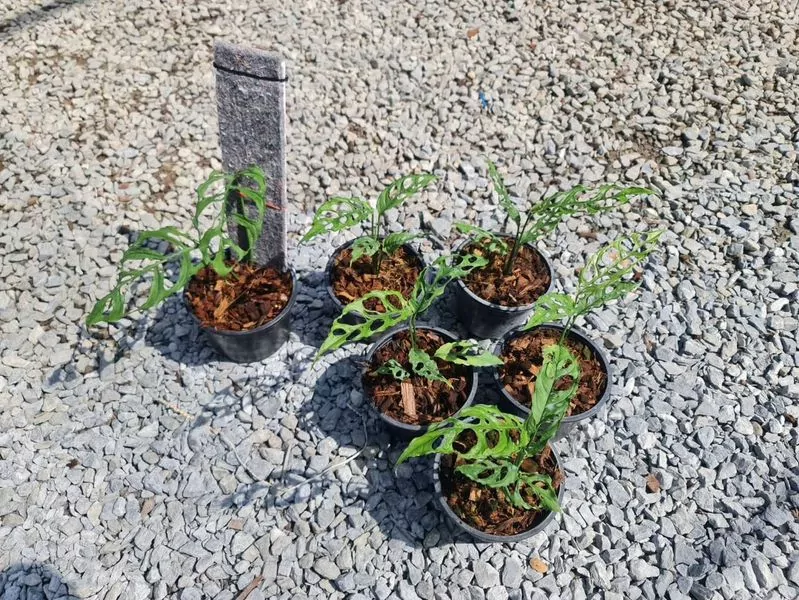
Monstera species are the most sought after by aroid plant lovers
Common Issues and Solutions
When provided with proper care, monstera obliqua peru proves reasonably resilient. But even attentive plant parents may encounter an occasional issue.
Drooping or Yellowing Leaves
If your monstera leaves start to droop, wilt, or develop yellowed patches, it likely indicates inconsistent or insufficient watering. Other causes can include drying soil, low humidity, too much light, pests, or fertilizer problems.
Solutions
Assess your plant’s watering regimen and environment conditions. Make any necessary adjustments to ensure its needs are adequately being met. Remove any heavily damaged leaves to allow new healthy growth.
Leaf Spotting
Sometimes monstera obliqua peru leaves exhibit small discolored spots ranging in shades of black, brown, or yellow. These unsightly blemishes are usually a sign of a fungal or bacterial infection. Excess moisture triggers most leaf spot diseases.
Solutions
Improve air circulation around affected plants and cut back on watering frequency to allow plants to thoroughly dry out between waterings. Treat spotted leaves with neem oil or copper fungicidal spray as needed. Severely damaged leaves should be pruned.
Slow Growth
Given this plant’s naturally glacial growth habit, slow pace of new leaf formation generally does not indicate underlying issues. But certain deficiencies can sometimes exacerbate its slow growth.
Solutions
Review lighting, watering, humidity and fertilization to remedy any shortfalls stunting your plant. Be extra patient with its slow development and avoid overapplying fertilizer which can burn tender new leaves. Focus instead on proper plant maintenance for steady, lasting results.
Conclusion
For seasoned houseplant collectors up for a challenge, incorporating a monstera obliqua peru into your plant family offers immense rewards. This extraordinary plant is not just a houseplant, but a statement piece that will elevate your collection. Its unparalleled beauty and vintage appeal make the efforts decidedly worthwhile for passionate plant lovers. Don’t wait, get your own Monstera Obliqua Peru now and start experiencing the joy of nurturing this rare botanical treasure. Do your research, gain the requisite experience, and tend diligently to your unique and precious green companion.
FAQs
Is Monstera Obliqua Peru rare?
Yes, monstera obliqua peru is exceptionally rare. Its limited availability is due to constrained native growing regions, its ultra-slow growth, and unstable variegated genetics. These combined factors make specimens enormously challenging to propagate and thus very scarce.
How much light does Monstera Obliqua Peru need?
Monstera obliqua peru thrives best with consistent bright, indirect sunlight. Some exposure to early morning or late afternoon direct sun is beneficial but should be limited. Insufficient light will retard its growth while excessive harsh light will damage its delicate foliage.
What temperature is best for Monstera Obliqua Peru?
Normal household temperatures between 60°F to 80°F suit a monstera obliqua peru well. Avoid chillier or hotter temperature extremes. As a tropical plant it prefers warm, balmy conditions. Cool spells below 50°F can impair health and stunt development.
How do I increase humidity for my Monstera Obliqua Peru?
To answer the question of ‘How do I increase humidity for my Monstera Obliqua Peru?‘, refer to our detailed document on the benefits of Monstera plants, which includes tips on maintaining optimal humidity for these tropical beauties.





















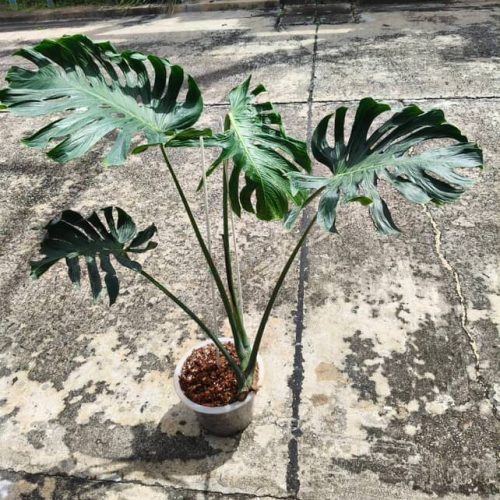
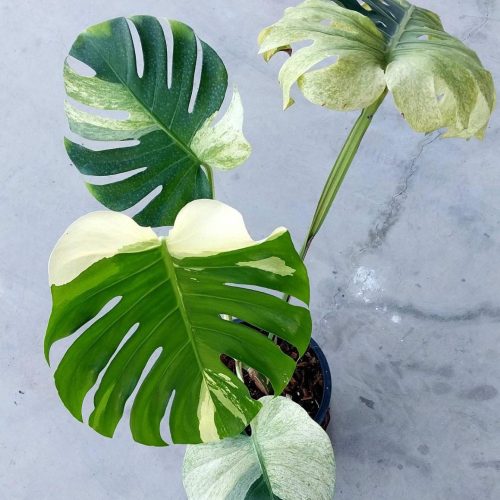



![12x Monstera Borsigiana Albo half leaves variegata [3-4 leaves]](https://greenboog.com/wp-content/uploads/2024/10/Monstera-Borsigiana-Albo-half-leaves-variegata-1-500x500.jpg)
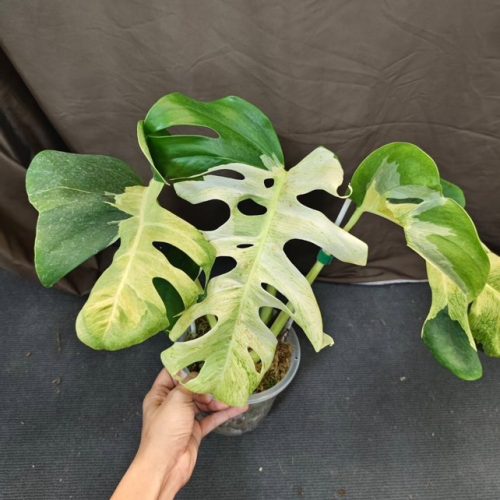

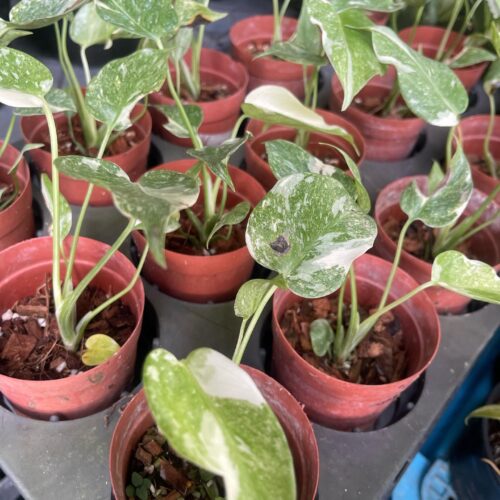
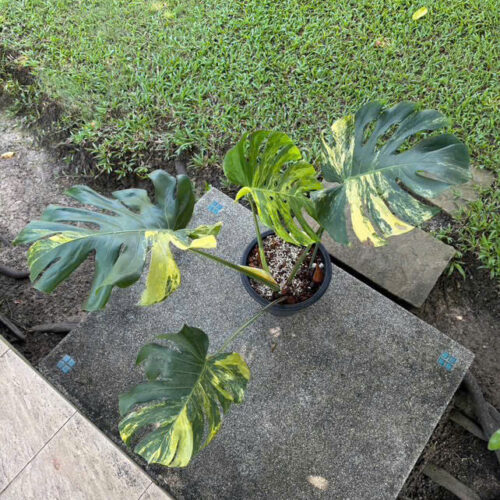
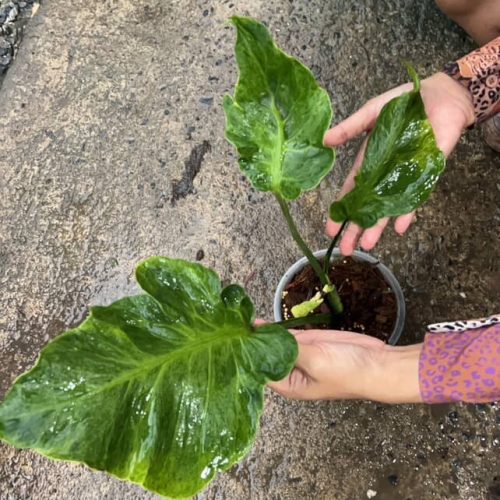
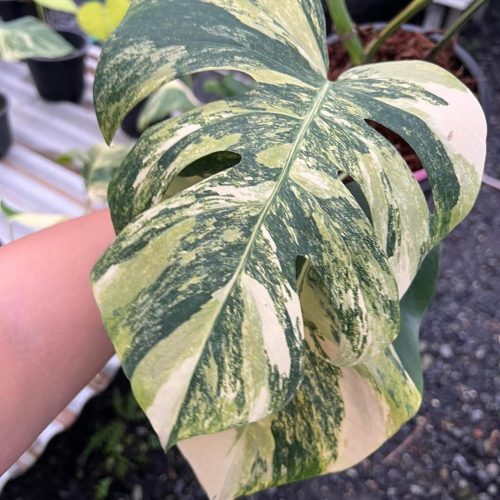

![10 Pots x Monstera Aurea Variegated / Mix Aurea tri color 3-4 leaves [well variegated]](https://greenboog.com/wp-content/uploads/2024/08/Monstera-Aurea-Tri-color-500x500.jpg)

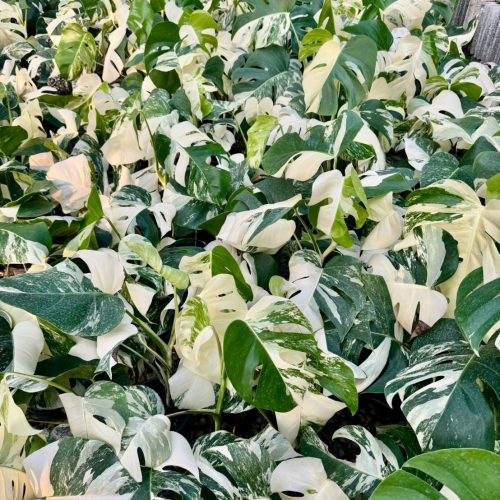
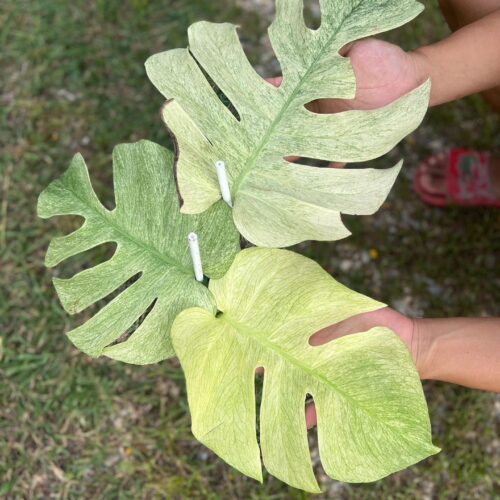
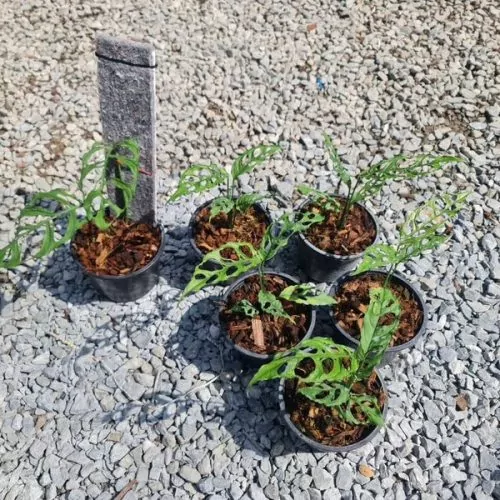
![[SALE] 10 Pots x Monstera Aurea Variegated 3-6 leaves [Medium size]](https://greenboog.com/wp-content/uploads/2025/01/Monstera-Aurea-variegated-4-6-leafs-500x482.jpg)

